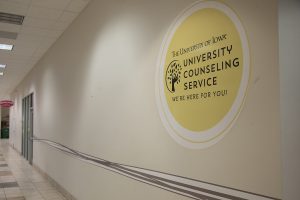Opinion | Schools do not do enough to combat racism
Oftentimes, schools will act as bystanders in cases of discrimination and at other times be the source of racial injustice.
iStock
October 8, 2020
There is always a coach, teacher, or mentor we look up to. They help us find strength, a sense of belonging, and push us towards success. Sadly, many minority students find it hard to find that person when they are constantly degraded in their learning environment. While we have come a long way from the era of Jim Crow, racial discrimination in education is still an issue that needs to be fixed.
We seem to forget that racial bias finds its roots in schools and even the faculty.
Teachers have the power to build interracial understanding, so why is it that the fight towards ending racial inequality in schools has not been successful? Micro-aggressions in schools can damage the academic learning of students, according to a study published by Children and Youth Services review. The worst part? It can also come from teachers.
When I walked down the hallways of Kennedy High School in Cedar Rapids, I sometimes heard slurs and hurtful words. However, whenever I addressed it with the administration, I was given blank answers and my concerns were swept under the rug.
The perception that racial inequalities and the tolerance of hurtful words have no repercussions in creating a hostile environment for students is the reason we are not moving towards equality. For example, when white teachers were asked if they committed microaggressions against black staff, 3 percent admitted to it while 40 percent of black male staff stated they had been subjected to it. If teachers cannot be honest about their interactions with their co-workers, how can they admit to wrongdoings against those they’re in charge of?
By rejecting students who have experienced racial biases by a teacher or a student, the school system is implicitly encouraging discrimination and hatred.
Educational experiences for minority students are separate and unequal. A piece of the puzzle is the racial bias that many teachers hold. In order to assess the magnitude of racial bias within teachers, a study by Brookings, a research think tank based in Washington D.C., shows that about 30 percent of respondents (including both teachers and non-teachers) expressed explicit pro-white/anti-Black bias and 77 percent doing so implicitly.
Research further shows that teachers implicit racial bias is associated with low expectations for students and worst instruction quality. These factors impact minority students negatively and affect their academic success.
By failing to support and assist minority students and condemn racial biases, teachers are furthering racial disparities in education and passing them down to future generations.
Our own Iowa City Community School District has progressed by addressing the racial justice in their school system. More specifically, the district is including more diversity and equity training.
Although this step is essential and progressive, simply addressing inequality is not enough.
A Harvard study found that “force-feeding can activate bias rather than stamp it out.” The positive effects of diversity training only last for a couple of days. Despite the rapid growth of these training and tests, there are still no results and injustices continue to occur.
We can no longer allow for these issues to go unidentified. The first step towards overcoming implicit bias is to acknowledge and identify where it’s happening.
Instead of teaching students and future leaders how to dismantle the system of oppression, it seems as if schools oftentimes teach tolerance and silence. There is always room for growth. Although we have come a long way, there is much more that needs to be done to achieve equality for all.
The fight is not over.
Columns reflect the opinions of the authors and are not necessarily those of the Editorial Board, The Daily Iowan, or other organizations in which the author may be involved.
















